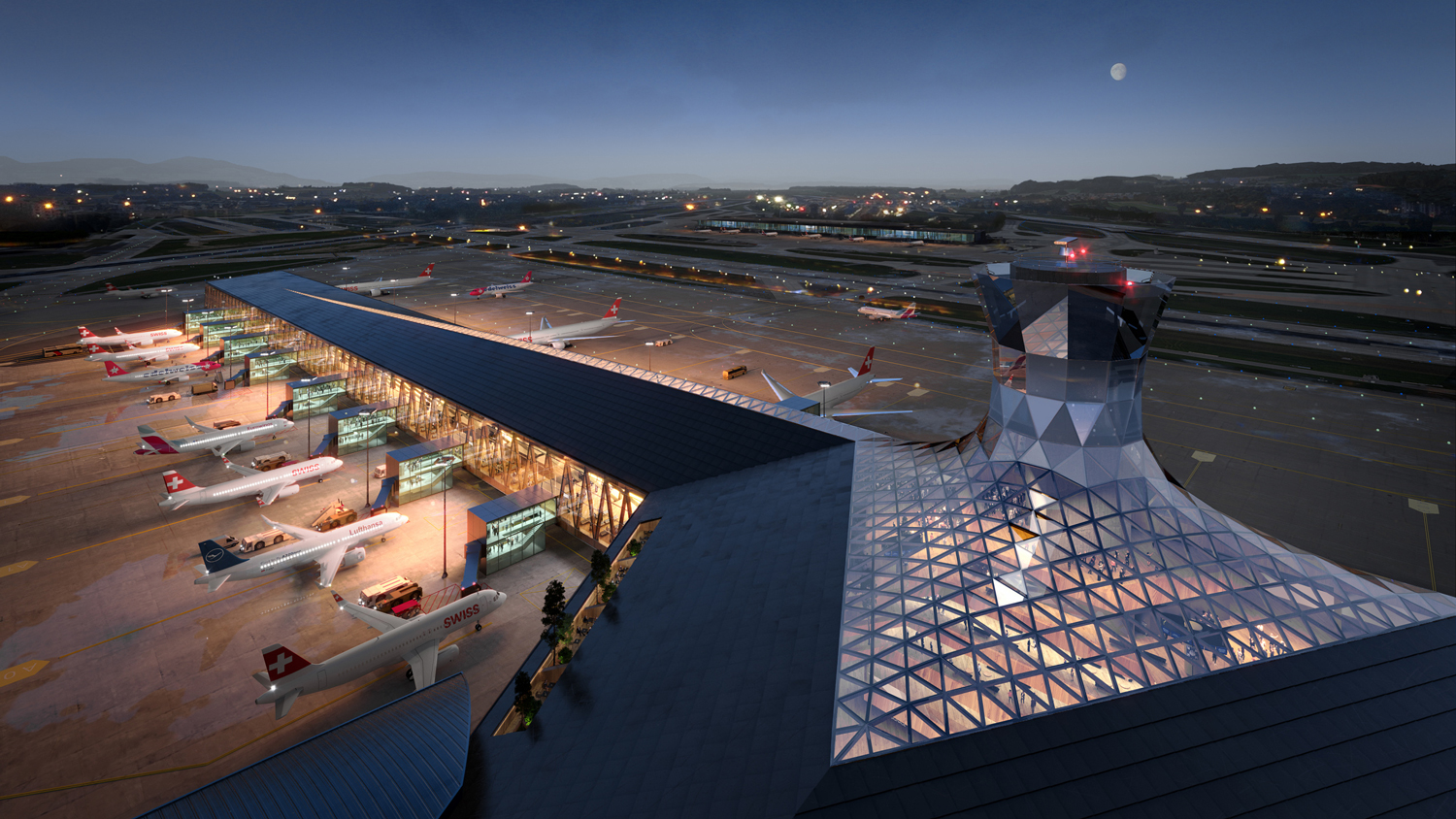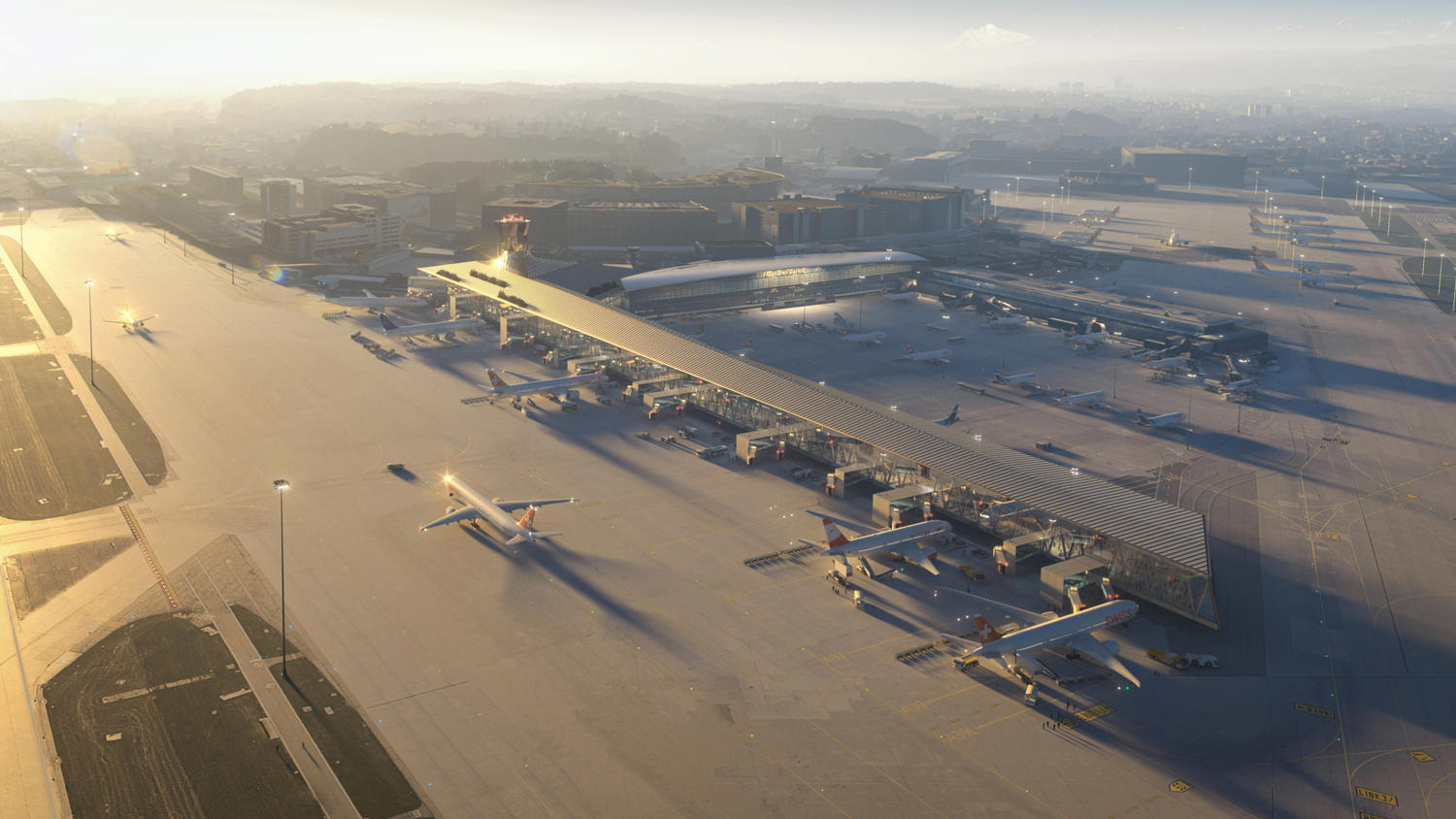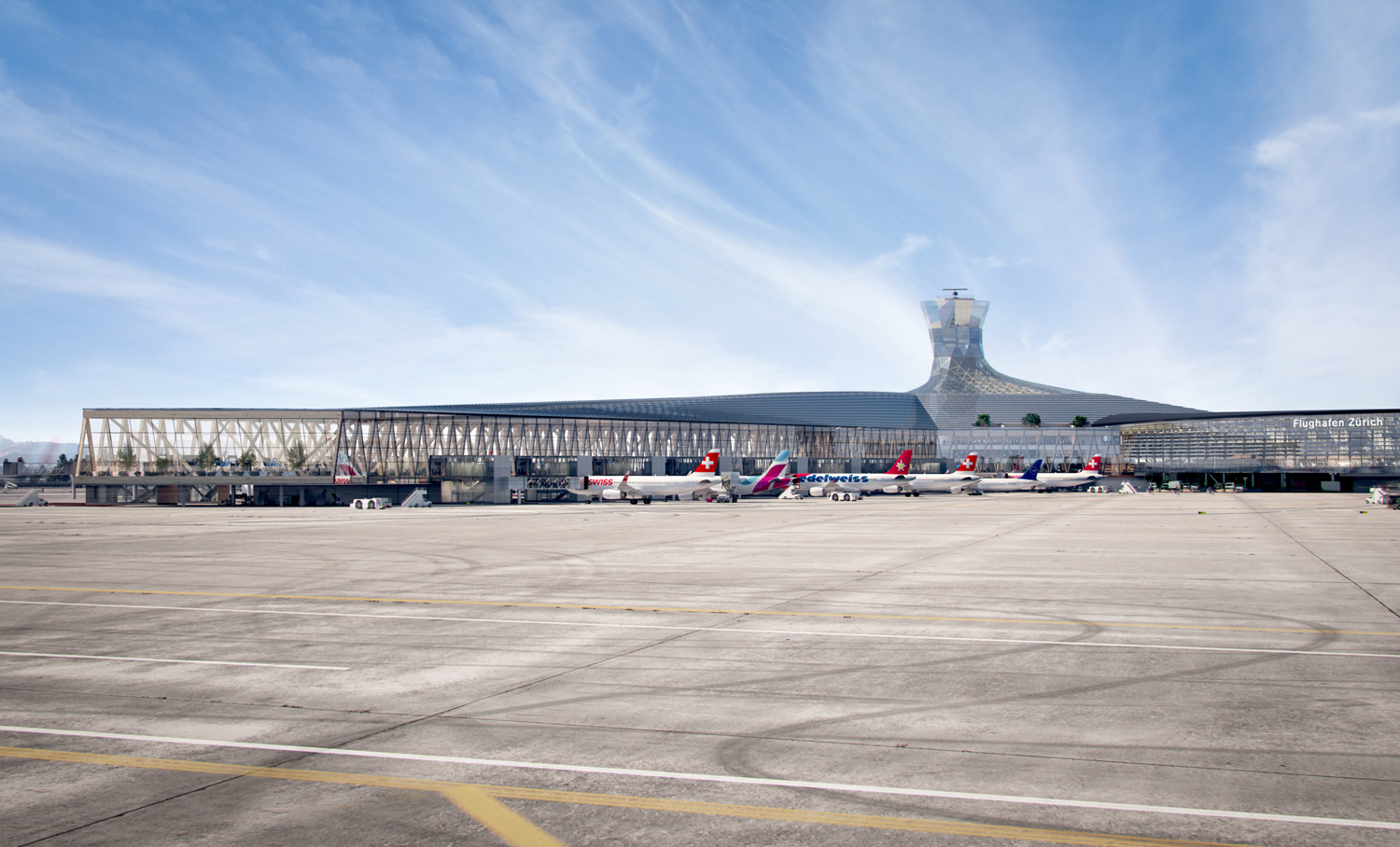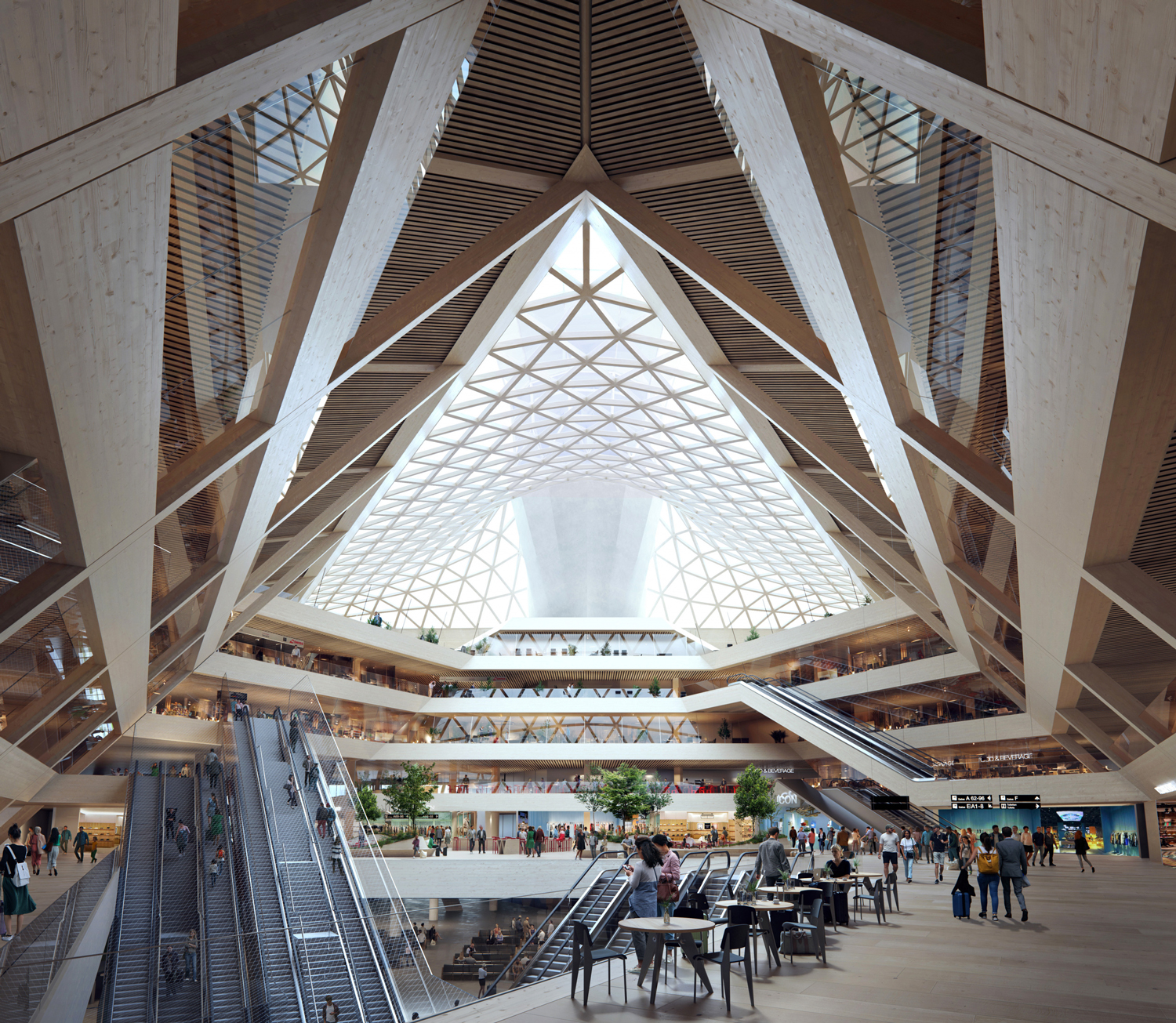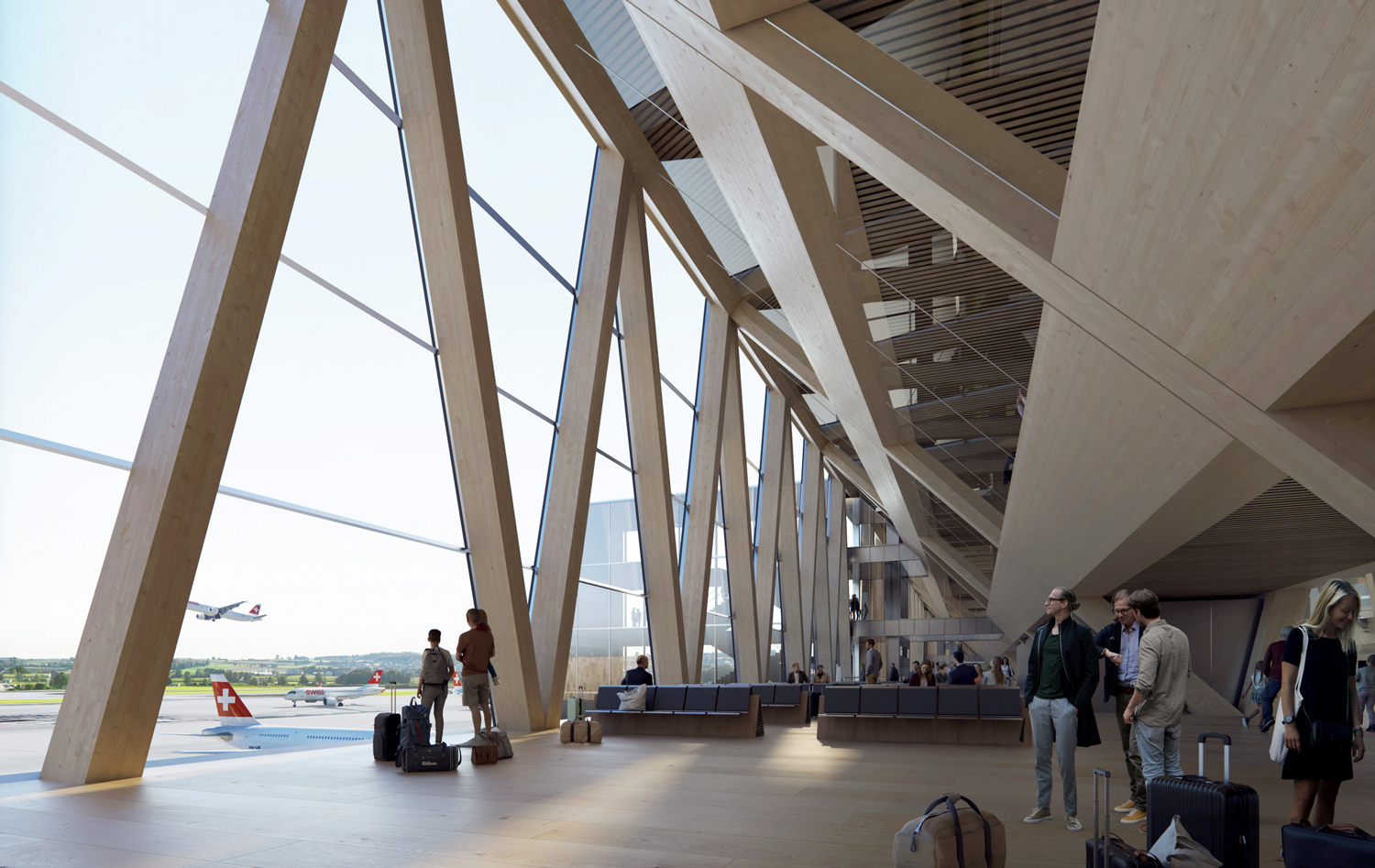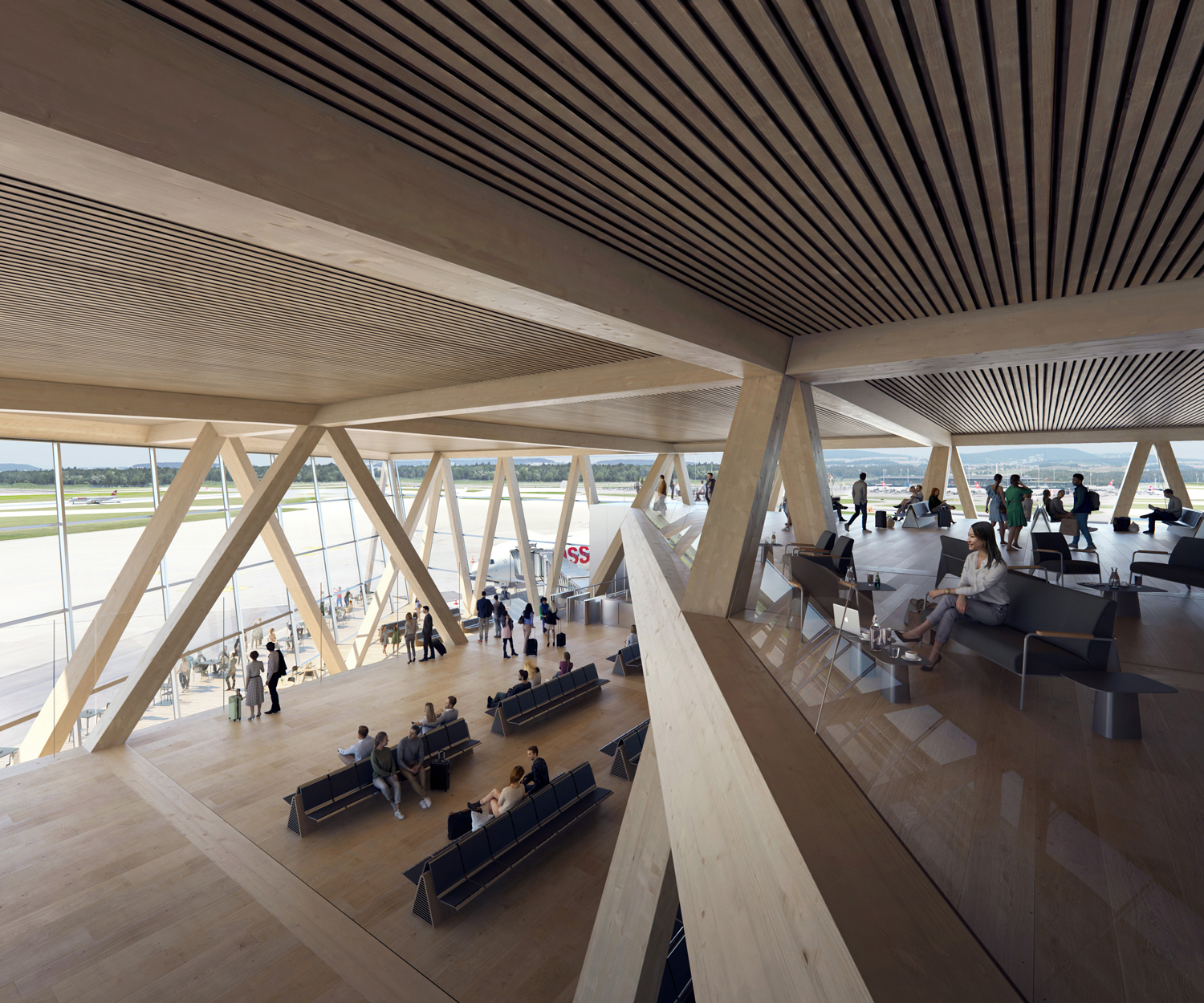☉ Zurich Airport is a winning proposal by Bjarke Ingels Group and HOK for Zurich Airport in 2022. It is located in Zürich Switzerland in an industrial setting. Its scale is large. Key materials are wood and glass. bucharest.studio and IMIGO collaborated as visualizers.
Since its opening in the 1950’s, Zurich Airport has become one of the most important aviation hubs in Europe. Following the airport’s previous additions of Dock E, the Airside Center, and The Circle, an international two-stage design competition was kicked off in 2020 to replace the aging Dock A. Expected to open in 10 years, the new Dock A – which includes Schengen and Non-Schengen gates, airside retail, lounges, offices, the new air traffic control tower, and an extension of the immigration hall – will be the next milestone in the airport’s expansion.
Based on BIG’s concept of the ‘Raumfachwerk’ – a robust yet flexible structural framework – the design proposal celebrates the passenger experience and movement through the airport. Located adjacent to the existing Airside Center and Terminal 1, the new Dock A is defined by two main areas: the central hub with shopping, airport services for arriving and departing passengers and vertical circulation, and the pier with the gates, waiting areas and the fixed links connecting to the planes.
“As airports grow and evolve and as international guidelines and safety requirements change, airports tend to become more and more complex: Frankensteins of interconnected elements, patches and extensions. For the new main terminal of Zurich Airport, we have attempted to answer this complex challenge with the simplest possible response: A mass timber space frame that is structural design, spatial experience, architectural finish, and organizational principle in one. The striking structure is made from locally sourced timber, and the long sculptural body of the roof is entirely clad in solar shingles turning sunlight into a power source. A simple yet expressive design – rooted in tradition and committed to innovation – embodying the cultural and natural elements of Swiss architecture.” Bjarke Ingels, Founder & Creative Director, BIG.
To enhance the passenger experience, the spaces within the new terminal use daylight as a natural wayfinding system. A linear skylight – created by the unfolding roof of the pier – widens toward the central hub and opens up into the atrium where all departing, arriving, and transferring passengers meet. By placing the control tower in its center, the tower is experienced from the inside as a beacon that creates a sense of place, akin to a town square rather than an airport.
Arriving passengers are guided towards the hub of Dock A – which is split across seven floors which are visually connected through the generous light-filled atrium. Passenger flows are funneled through the atrium that connects all floors via stairs, escalators and elevators – from the underground immigration hall to all arrival and departure levels, and the lounges on the top floors of the central hub.
A contemporary, pared-back material palette, the structure, floors, and ceilings of Dock A are envisioned with timber as the main material. As a renewable local resource, this material choice allows for efficient prefabrication during the construction process while paying homage to the long-standing local tradition of wood construction in Switzerland. The main loadbearing system of the building is based on V-shaped timber columns – providing a structural function while also serving as a reference both the iconic Swiss alpine landscapes and the centuries-old tradition of timber construction and traditional pitched roofs. Arriving passengers will be welcomed by this distinctly local architecture that showcases high-quality craftmanship while underscoring the airport’s pledge to sustainability.
Dock A’s roof will be covered with PV panels while integrated shading will reduce solar heat gain and maintenance requirements, and a combination of water and air-based cooling and heating systems will improve the building’s energy demand.
